I absolutely love to annotate books.
The habit started with highlighting and taking notes in e-books. I was not ready to actually write in physical books. But after a while, I simply could not hold myself back. I HAD to highlight and comment on things, so I picked up a pencil and began annotating Children of Blood and Bone.
That was like breaking a dam. Since then, my annotation methods have evolved but my love for annotation has only grown.
I really want to encourage more people to pick up the habit of annotation even when you are reading for fun.
If you want to know how to start annotating books, this is the only guide you need. And no one may have asked me how I annotate my books, but I will share that anyway further below in this post. Let's go!
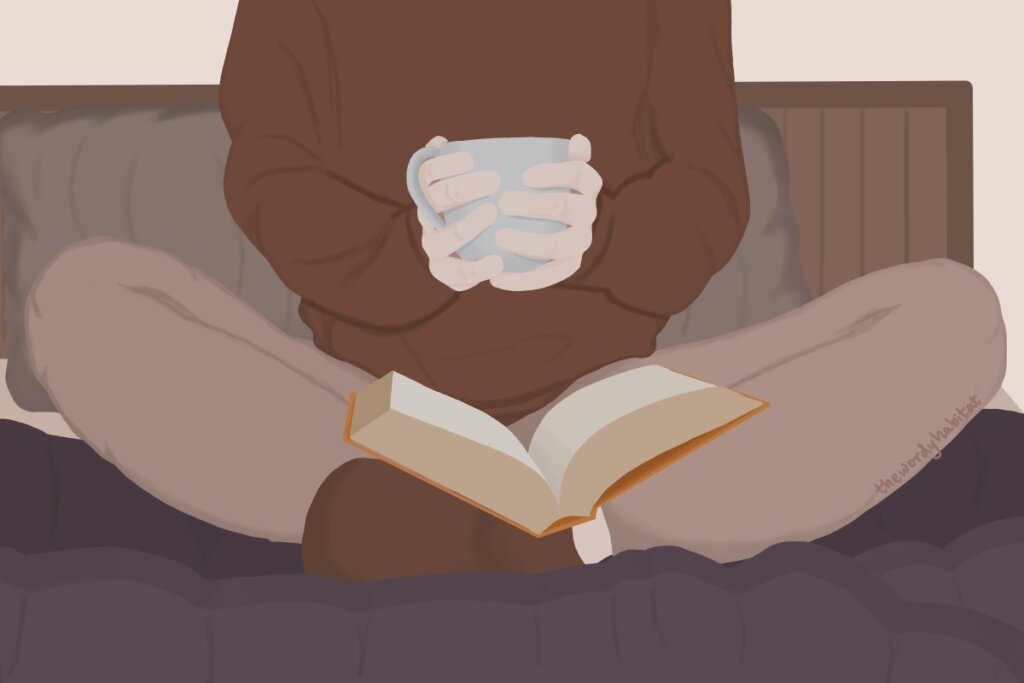
why should you annotate books?
There are several benefits to annotating. But to name a few major ones..
- It helps you read actively. Active reading is when you are engaging with the text rather than just passively reading the story. It also reduces skim-reading, if you have that habit.
- You will remember more. This is a by-product of active reading. You remember more details of the book and also your reactions to it.
- You will understand the book better. Annotating especially helps with books that deal with heavy or complicated topics. Or just books that you can learn from. Annotating helps you truly absorb the book and understand the characters, underlying layers, etc.
- In case you ever want to check something or reread a favourite part, annotations are great for future references. They also come in handy if you are a bookish content creator online.
A ton of people relate annotating to studying and hence don't want to do it when reading for fun. I personally did not always annotate for studying because it wasn't encouraged in my academics (we didn't even have required reading, sadly) but I understand the sentiment.
You have to separate the act of annotation from studying. The benefits of it are why it is encouraged in academics. But annotating can be fun too!
Writing comments, including drawings or illustrations, and conversing with the text makes the experience of reading much more fun. Annotating is not just for critical thinking, quotes or discussions. It can also be a commentary on funny dialogues, shocking turns, or rants on annoying characters.
Authors spend years working on their books. Take a few extra minutes to annotate and fully experience the books. It will help you to enjoy your books more and hence will help you create a reading habit too.
If you still need convincing, read the essay How to Mark a Book by Mortimer J. Adler. I came across this essay through Naya and absolutely loved it. It reinforced my love for annotating and reassured me that, despite tons of people in the book community saying "it's a sin", it is actually a good habit. I've also taken a print of the essay like Naya because it is that good.
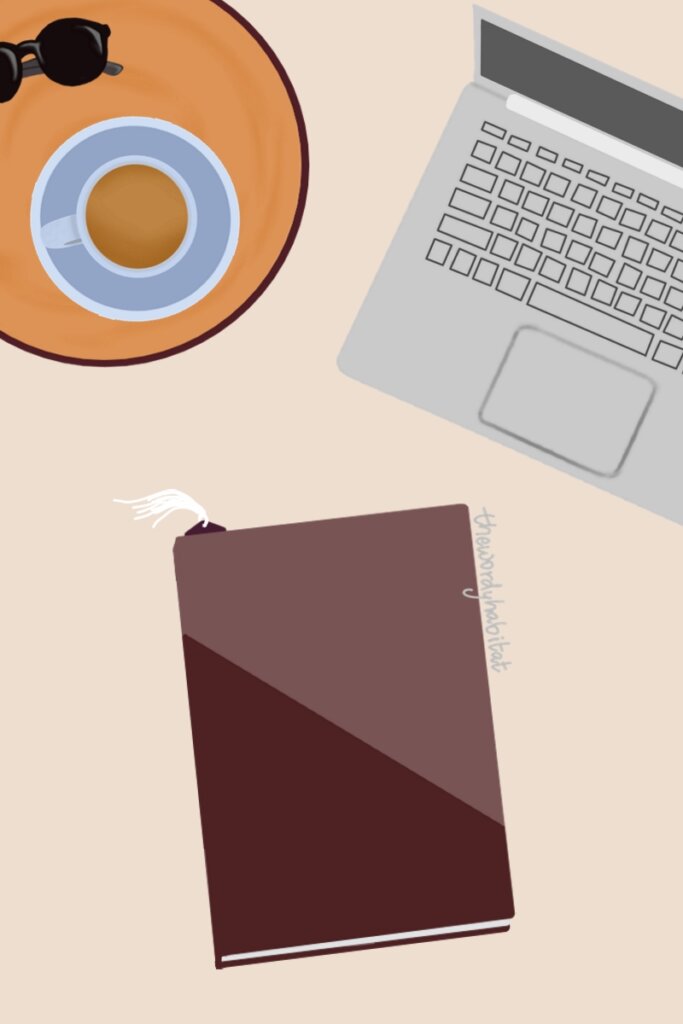
tools for annotating books
There are several ways to annotate. I will list and suggest different methods later in this post. But there are some basic tools that you need to get started.
Depending on the annotation method you choose, you can use one or more of these tools.
1. sticky tabs/notes
Sticky tabs are small tabs that are used to point to a specific line on the page. There are various types available such as arrow tabs, rectangular tabs, and different coloured tabs.
Sticky notes can be used when you want to write a lot of content or when you want to talk about something tangential to the topic on the page.
2. highlighters
There are different types of highlighters that you can use. Regular highlighters work just fine but if you don't like the neon colours, you can use mildliners. Highlighting using brush pens is also really nice.
I prefer Tombow brush pens because they provide more control when highlighting due to the thickness of the brush tips.
3. pen/pencil
These are classic tools used for annotating. If you want to get started with underlining and writing in the margins, but don't want to commit to permanent annotation, you can use pencils. Blunt pencils work best to erase later on.
If you're using pens, you can use different colours of pens for different types of annotations too.
4. notebook/phone/another device
You may not want to mark the books themselves for whatever reason. At those times, you can keep a notebook with you to write in. If you have an iPad with a really nice note-taking app, that helps too. I personally like making notes in GoodNotes.
Note-taking on your phone also works but generally, phones tend to pull our attention away from whatever we're doing, so I don't suggest this unless there's no other way. If you do use your phone, keep it on "do not disturb" mode so that you can read without distractions.
I highly suggest using a note-taking app that supports multimedia to take notes on your phone. I use Apple Notes so that I can write notes and add pictures if I don't want to type paragraphs.
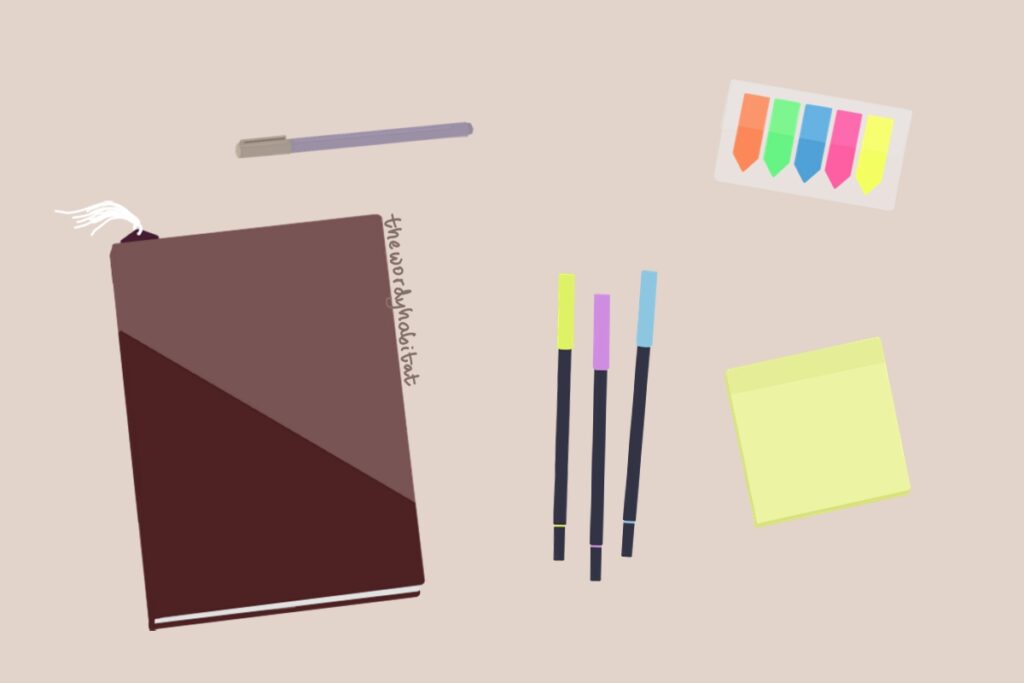
before you begin annotating
Don't assume that you will annotate the book. Go in without that idea. Otherwise, you will spend time looking for lines to underline or thinking about what to comment on for each paragraph.
To keep it genuine, annotate only when you really feel like it. You're reading for fun! Don't make annotating a chore. Let it come naturally.
Mark sentences by underlining only if they call out to you, or they feel important to the story. Write comments if you have something to say or if the passage made you feel something.
If you're holding a pen or pencil in your hand, ready to mark anything of consequence, it will distance you from the story. Don't look for reasons to use your tools. Let them be a little away. Pick them up when you have a reaction to something in the book.
Annotating will feel weird in the beginning but the habit will grow over time. Don't expect yourself to go all-in the first time you start.
how to annotate books
There are multiple ways to annotate books. You can either pick one beforehand or decide later based on what you want to mark in the book.
Don't stick to a system immediately. Try out different methods. Be open to exploring and changing. Annotation is supposed to improve your reading experience, not to put your thoughts in a box.
1. underline/highlight
These are two of the most basic ways to annotate.
When you read a line that is powerful or lyrical, mark it. If a dialogue made you laugh, mark it. If you want to highlight multiple lines or entire paragraphs, do it!
You can use different colours to underline and highlight. The colours can signify different meanings like yellow for important facts and green for good writing. Different colours can also mean different readings. For The Poppy War, I used one colour for highlighting during my first read and another colour during my second read.
Depending on how "important" the annotation is, I use a different tool. I use pens and highlighters for ones that I want to stand out, pencils for random lines that resonate but don't mean much without the context. You can try underlining with lines and waves to differentiate.
2. circle/bracket
For singular words or short phrases, circling them with a pen highlights it well. Whenever I come across a word or a sentence that is important to the topic or means a lot, I circle it. I also circle words that I've come across for the first time and write their meanings nearby.
For paragraphs or multiple lines that mean a lot, I use brackets either at the beginning and end of those lines or on the side, bracketing the entire paragraph.
3. write your thoughts
Another classic annotation method. This is a little more in-depth because it involves you writing your opinions and conversing with the text.
Annotating with writing doesn't mean you have to write a lot. Comments can be short forms or small sentences too. You can fit smaller comments right after the end of paragraphs or in the margins. It can also be emojis, "LOL", or other slangs. The point is to note your thoughts and/or emotions.
Longer comments do take up more space. When I was reading The Burning God, I took up almost half the page's empty space once because I had so much to say about a certain theme.
Writing comments can change based on genres and themes. For example, I barely write in romance books. The extent of my annotations are generally "this is so cute!" and "OMG" unless I'm ranting about something.
But when I was reading The Right Swipe, I added longer comments to highlight how CTE was spoken about, note my thoughts on the dating industry, etc.
Tip: if you are prone to rephrasing a lot or are not good at space planning (like me), try writing with a pencil instead of a pen. That way you can erase and write again if needed. The downside is that pencil marks can fade over time.
Annotating with writing is really fun because you're almost conversing with the book. It's also fun because you can see your old notes during rereads and have conversations with your older self through new annotations.
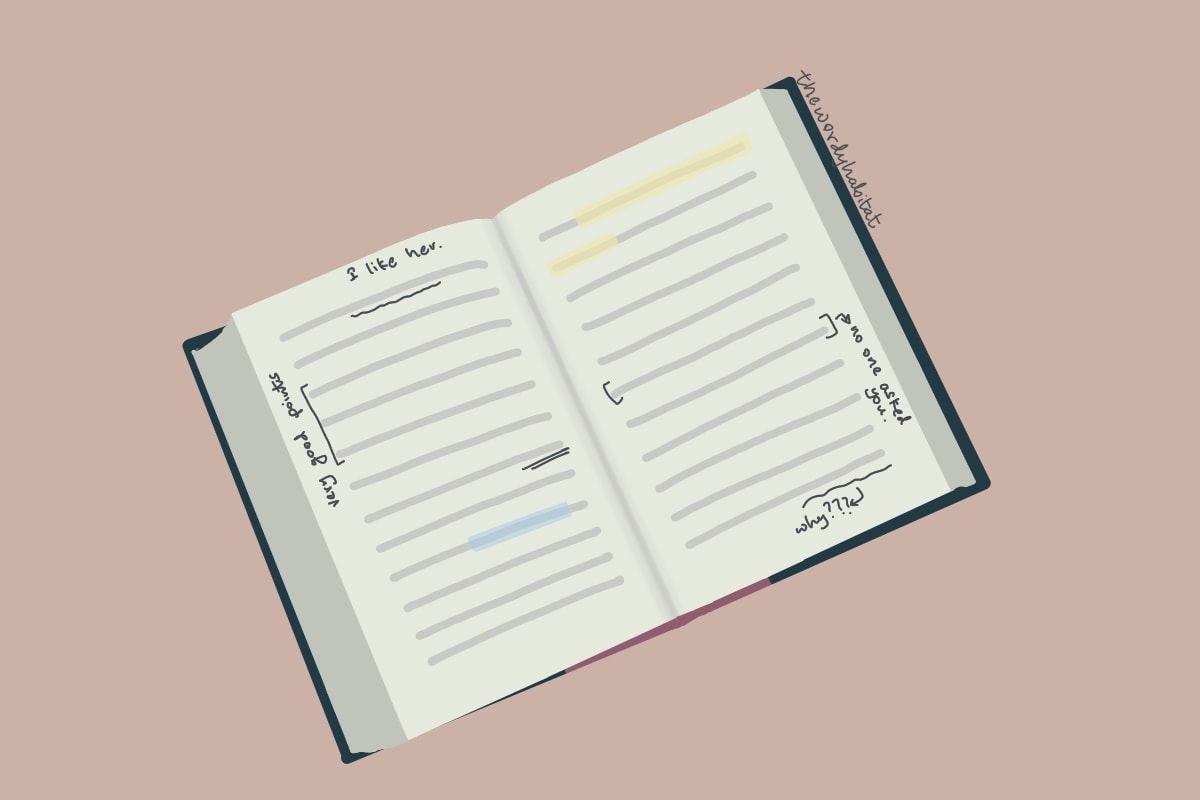
4. dog-ear pages
Dog-earing, or folding corners of pages, is helpful because you can easily find your favourite parts of the book later. Or you can refer to important parts that you've marked.
This is probably the most argued-about method of marking a book in the book community. But it is very easy to do and requires no extra tools.
You can mark your favourite scenes, important parts, or pages that have a lot of annotations by dog-earing those sections. I would especially recommend this method for the last reason. If you've annotated a lot by writing or highlighting on one page, you might want to refer back to it later, so dog-ear it.
5. draw/doodle
This is not a method that I personally use a lot but I have seen other people use it.
One way is to doodle small symbols to signify specific themes and maintain a key for these themes at the beginning/end of the book. You can also simply draw hearts or stars to mark parts you like.
If you're reading non-fiction books that explain topics, you can draw mini mind-maps to remember things better (I did this for The Power of Habit).
If you found this post helpful, do consider buying me a coffee in appreciation! ☕️
how to annotate a book without writing in it
If you want to start annotating and are not comfortable with marking the book yet, this is for you. There are ways to annotate without writing in the book. You can use these methods to get into the habit of annotating, and you will probably work up to writing in the books later on.
These methods are also useful if you don't own the book you're reading or you are planning to sell it later on.
1. use sticky tabs
Whoever invented sticky tabs are a GENIUS because they are so useful.
There are so many ways to annotate using sticky tabs. Since they are available in different colours, you can assign themes to colours and add a key at the beginning like Myonna. Some readers use the same key throughout their books and others switch whenever.
You can also use tabs to mark quotes, favourite lines and passages, or parts of the book that made you feel something.
Or you can simply use the page tabs wherever without caring about the colour. Since I don't assign colours to themes and usually just use one colour per book, I choose a colour that matches the book cover.
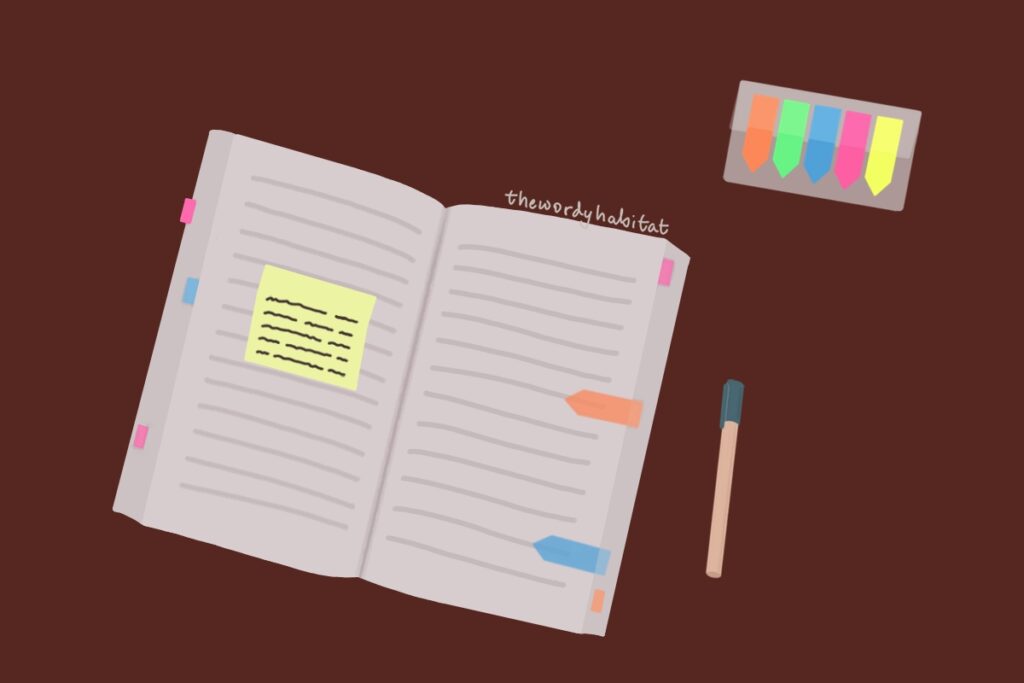
2. use sticky notes
Annotating with sticky notes is helpful when you have a lot to say about something as they provide more space. You can use sticky notes instead of writing in the margins.
Some readers stick the notes in the middle of the page, others stick them near the part that they're commenting on. You can also stick the notes sideways so that a little bit of the paper peeks out of the notebook similar to page tabs, making it easier for you to find later on.
The one drawback to this is that it covers up a part of the page. Hence, you have to write and stick after you're done reading. And when you're referring later, you can't read the page that you wrote about without removing the sticky note.
There is one way to make sure that they don't cover up the page. Stick the notes at the bottom of the page, so that the sticky parts are on the empty space, and fold them into the book. This way you can flip them open to read your notes and they don't cover up the page as well.
3. use a reading journal/make notes
If you want to annotate but don't want to do anything to the book, you can maintain a notebook as a reading journal to write your thoughts in. This also works for audiobooks as bookmarking in the audiobooks itself can be messy.
For non-fiction books that give a lot of information or books that you're learning a lot from, making proper notes works well. Reading the content properly such that you can write the most important points by memory vastly increases comprehension.
You can also make notes on an app on your phone since you will have your phone with you most of the time. This can result in distraction as you can fall into the phone's black hole through notifications and messages.
Both of these methods can be tedious compared to other methods of annotation because they remove your attention from the book. If you can manage to just write the notes and not fall into social media, these are great.
Leonie uses these methods of annotation so you can check out her video to know more on how to use them.
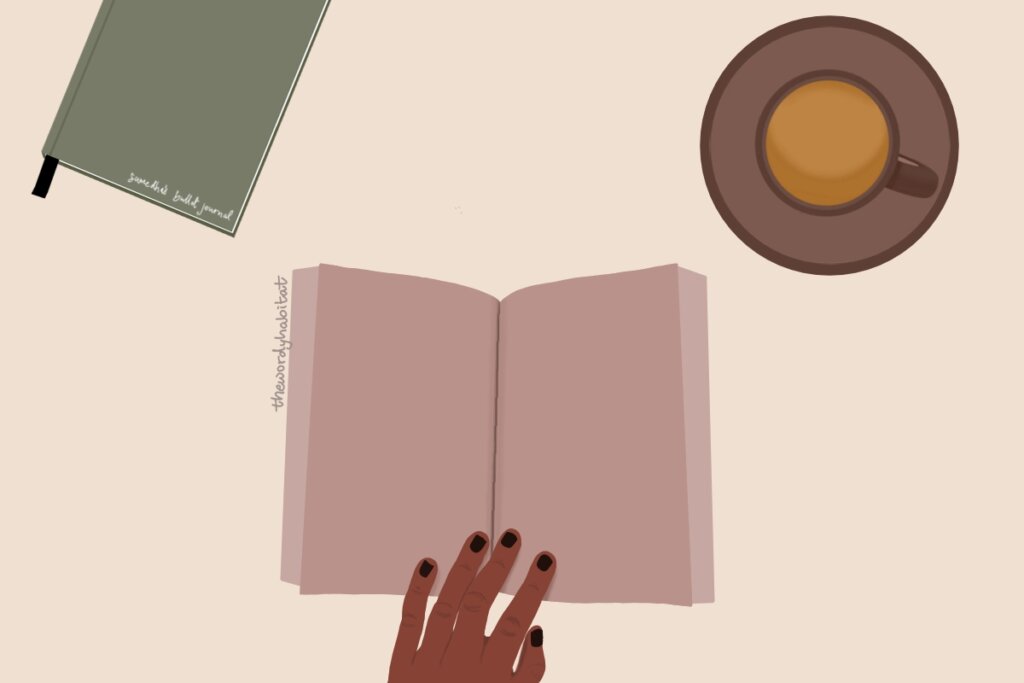
what to annotate in a book?
If you are new to annotating and don't know what to annotate, I've got you covered.
These are some ideas that you can try out but know that annotations are very personal and what works for others may not work for you. Different people annotate different things. Try a few of these and your specific annotation method will develop once you get the hang of it.
- Quotes. Any lines that are written really well or that strike a chord in you. If you're a reviewer, these can be mentioned in your book reviews.
- Write your thoughts in the margins or on sticky notes if something shocking, exciting, annoying or sad occurs. Or if you simply have something to say in relation to whatever is going on.
- Doodle emojis to signify how you're feeling during a scene.
- Summarize your thoughts at the end of every chapter. This is a good way to see how much you've retained about the chapter and to also write down any opinions or criticisms. The ends of chapters are good since there will most likely be more space to write and you will have more to say.
- Mark text that relates to the main plot. This will be good with books that have a ton of plot (like fantasy, mystery) or ones that discuss topics in-depth.
- Note new words that you come across along with meaning. You can do this on the page or at the end of the book on an empty page.
- Question actions of characters or themes portrayed. If there is a representation of a marginalized group that you are a part of, you can note your thoughts on it.
- Theorize where the plot is going in the margins by noting foreshadowing* in the book.
- Mark references to look up later. I do this with books that involve history or mythologies that I'm not familiar with.
This is not an exhaustive list. I'll probably come back and update whenever I think of something else. But this should be enough to get you started!
*Foreshadowing is basically hints dropped by the author which subtly leads up to the future plot.
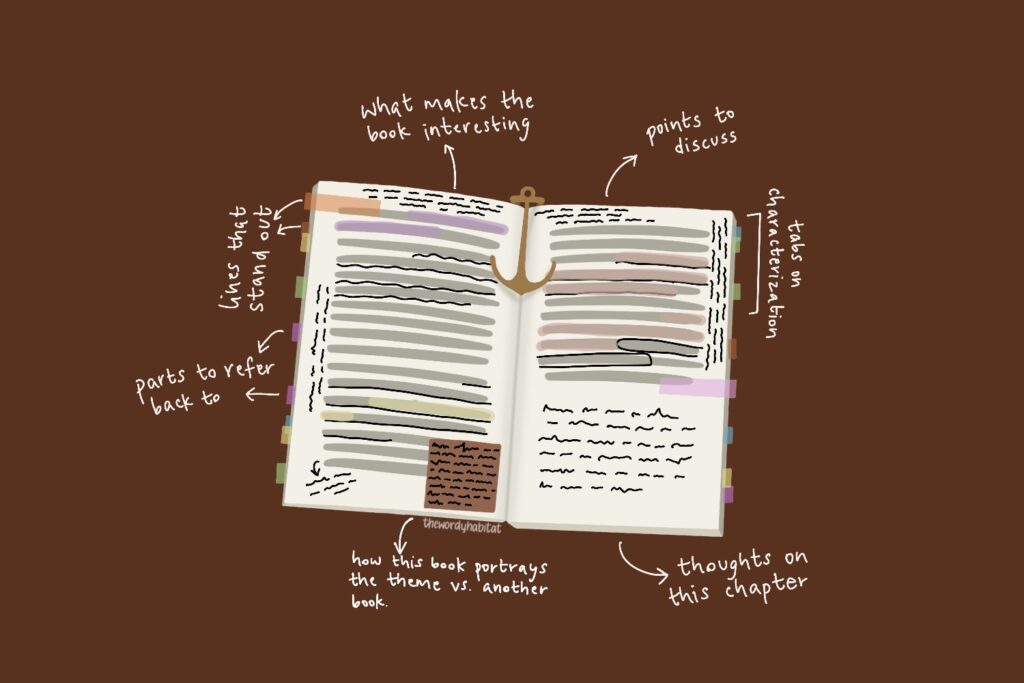
best books to annotate
Technically, any book can be annotated. You have the build the habit of annotating your thoughts using whichever method instead of keeping your opinions in your mind while reading.
But there are books that will make it easier for you to start annotating.
- Annotate your favourite books. As you love them, you will have a lot of opinions on those books. Reread them and annotate! Mark your favourite passages and the things that you love about the book. Underline lines that made an impact on you. Doodle/write your emotions in the margins.
- Annotate books that you're disliking. If you're reading a book that you're not enjoying, annotate why you're not enjoying it. Is it the characters or the plot? Do you not like the writing? Did you find plot holes? Make yourself expand on your opinions during annotation.
- Annotate non-fiction. Whether you read non-fiction often or not, they can be very fun to annotate. Mark important points, make summaries of chapters, and tab what parts of the book make sense to you. Here are a few non-fiction recommendations to get started:
- Maybe You Should Talk to Someone by Lori Gottlieb.
- Why I'm No Longer Talking to White People About Race by Reni Edoo-Lodge.
- Atomic Habits by James Clear.
- Seeing Like a Feminist by Nivedita Menon.
- How to Be Perfect by Michael Schur.
- Annotate fantasy books. These books have entire worlds and concepts within them. Because of the amount of information they contain, they're great to annotate. Highlights quotes and phrases, tab parts that are important or explain something, and write your thoughts on the world-building and characters. Here are some great high fantasy books to start annotating with:
- Raybearer by Jordan Ifueko.
- An Ember in the Ashes by Sabaa Tahir.
- The Poppy War by R. F. Kuang.
- The City of Brass by S. A. Chakraborty.
how I annotate books
No one has asked me how I annotate but I am jealous of the creators who get asked to share their systems, so I'm sharing mine anyway.
While my annotating habit started with e-books, I annotate more when I read paperbacks. There's just something about holding the book and using a pen or a brush pen that makes it more engaging.
I don't annotate all the paperbacks that I read but I usually can't hold back if I have comments. My habit has fully developed so I get a pen in the middle of a chapter if I don't have one because I NEED to annotate.
My system used to be mostly sticky tabs and a few sticky notes. But now use sticky notes only if I want to write a lot and usually directly annotate on the page.
As you can see below, I used 6 different annotation methods in The Art of Creative Thinking—highlights, underlines, circles, sticky notes, tabs, and writing directly on the page.
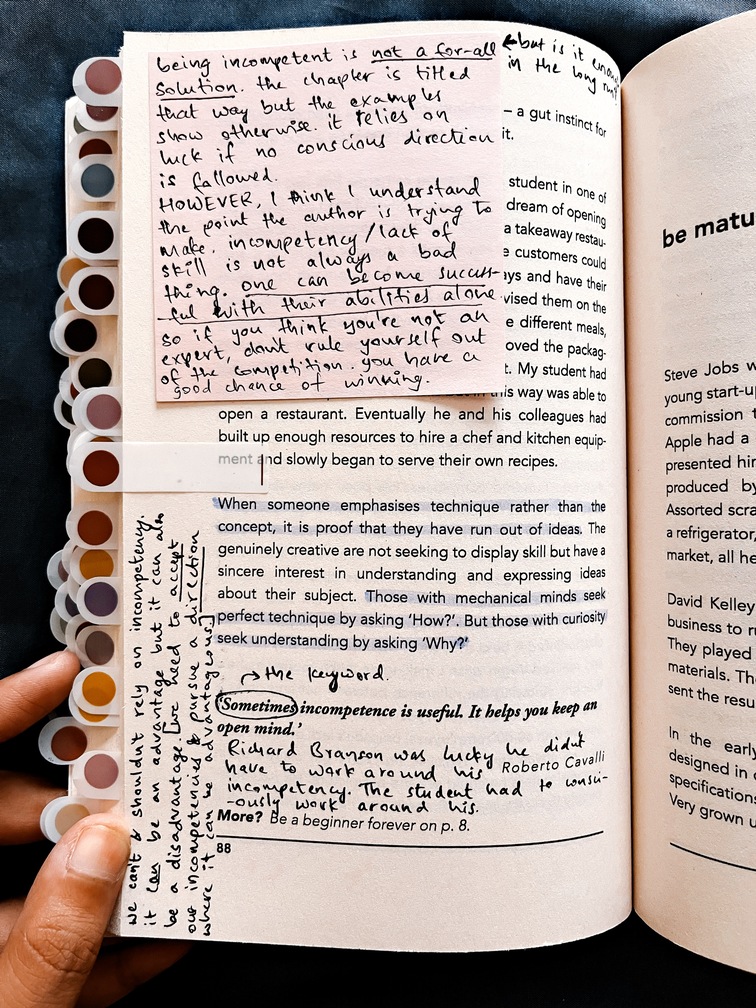
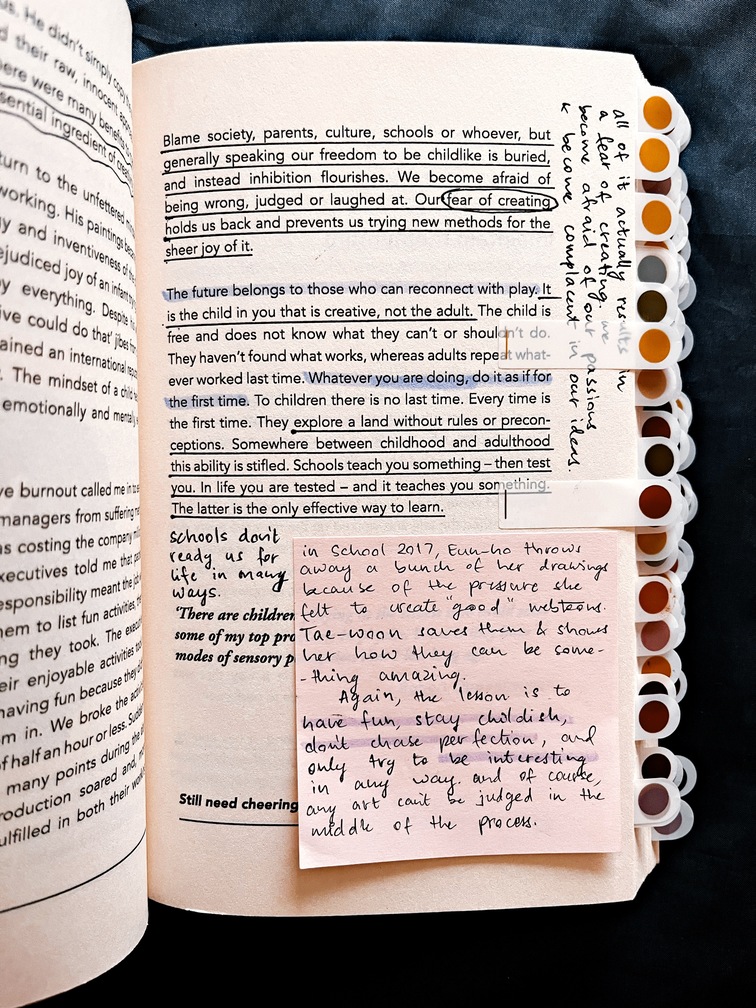
I love writing comments and my reactions on the margins more than highlighting. My comments range from intellectual opinions to "OMG" and "are you serious?????" depending on my mood.
It's fun to read my past annotations and see how I notice different things as I've grown as a person. I especially noticed the difference during my reread of The Poppy War. I picked out different themes as "main" in my two reads and it is interesting to see the difference because it was partly influenced by my life events.
After annotating the first two books of the series, I went to TOWN with The Burning God. I completely marked the book and made it my own. It was so fun and I truly feel like I gave the book the attention it deserves.
Another book that I annotated was Fahrenheit 451. While I did annotate my reactions, I commented a lot about the themes portrayed and the writing style. My review came out really well because of my annotations and I even shared a lot of them in my review post.
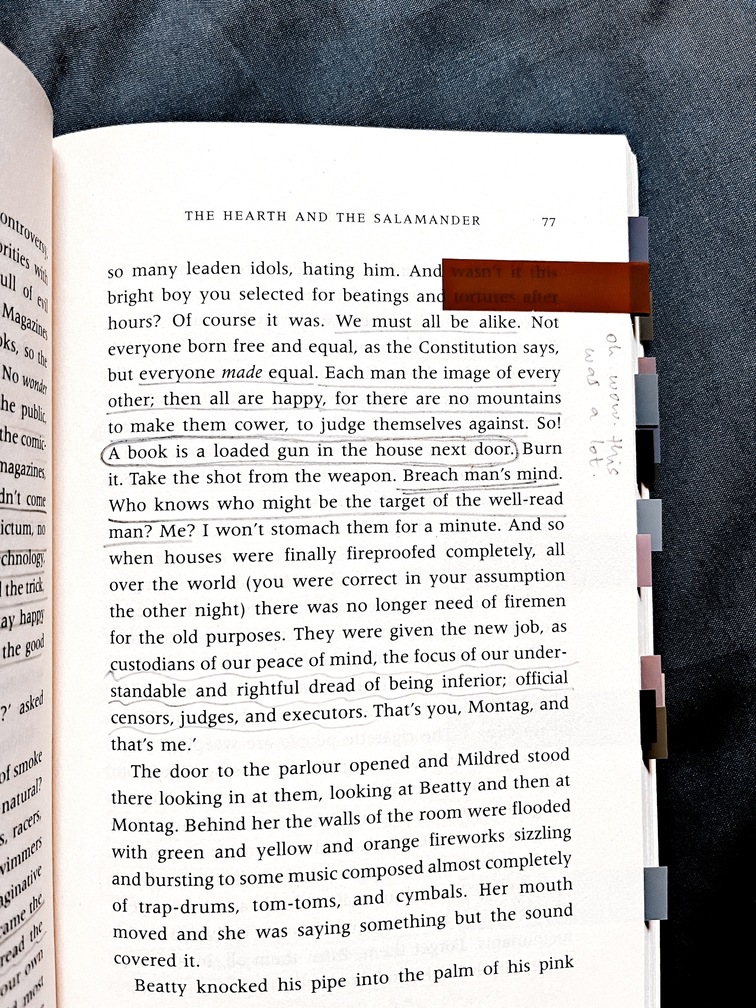
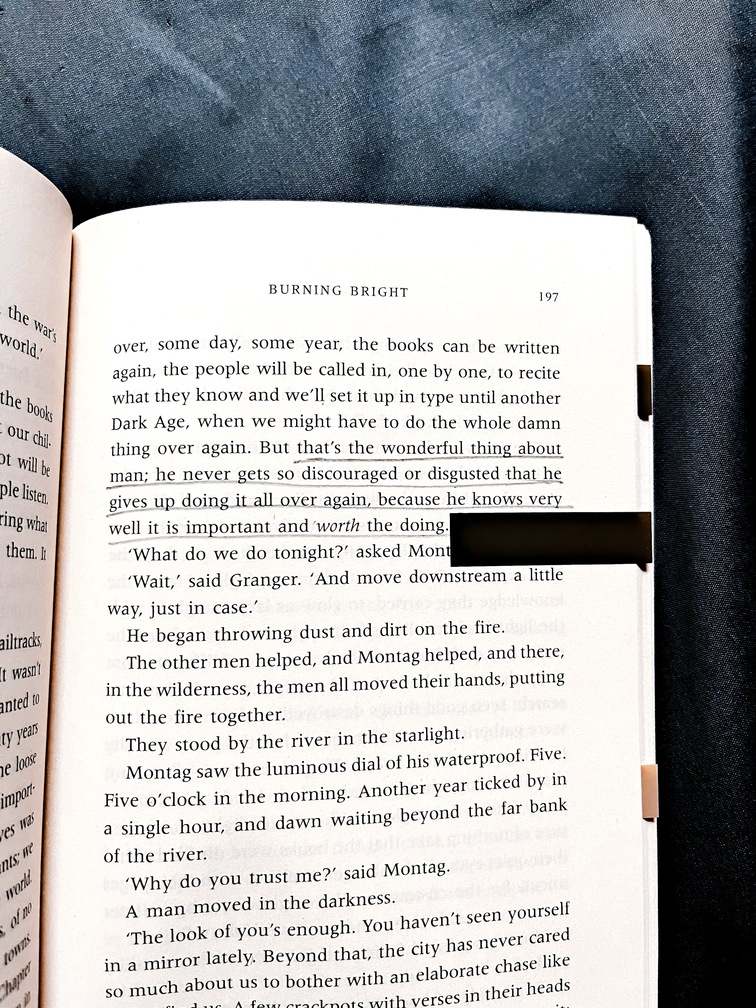
Annotating non-fiction books is a completely different type of joy. When I read Maybe You Should Talk to Someone recently, I used THREE forms of annotation. I highlighted lines that resonated with me, tabbed the highlighted lines which I wanted to come back to, and wrote chapter summaries at the end of each chapter with sticky notes.
Another non-fiction book that pushed my annotation limits was Atomic Habits. While I highlighted lines on the book with two colours, I also made notes on my iPad using GoodNotes. This was the first time I made proper notes and it was great.
Because I annotated while reading the above two books, my reading comprehension and memory retention improved. I remember a lot from them even though my memory is generally not great.
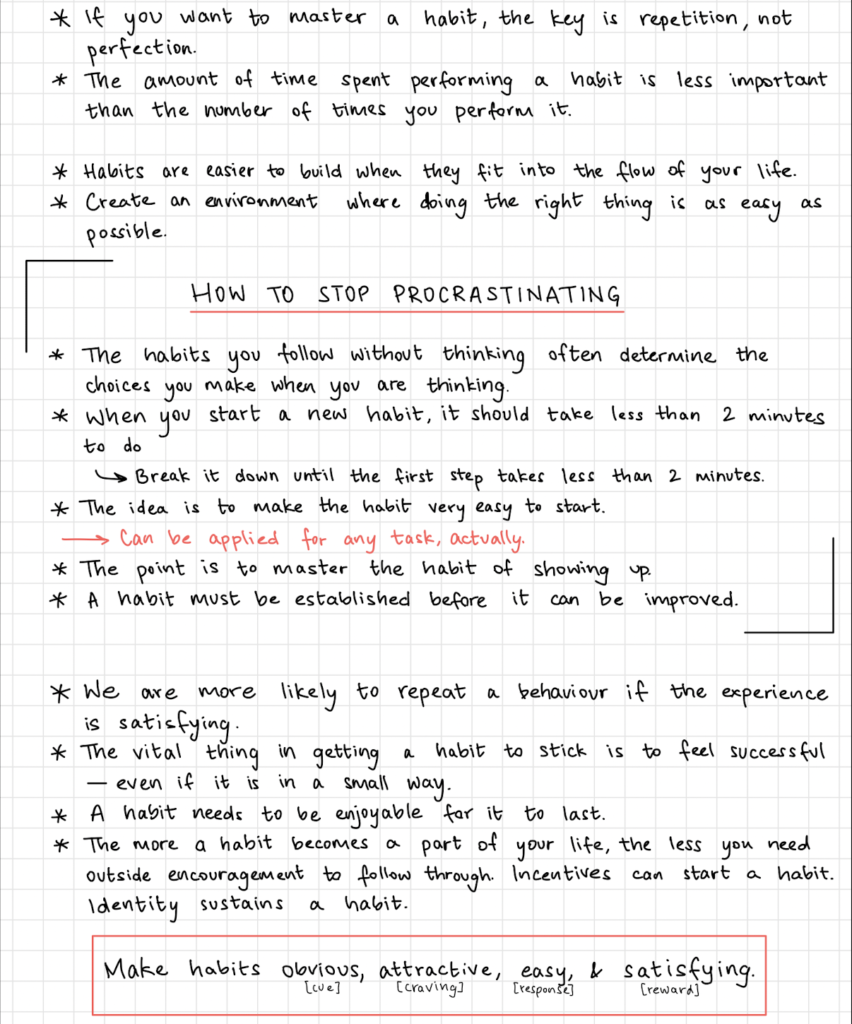
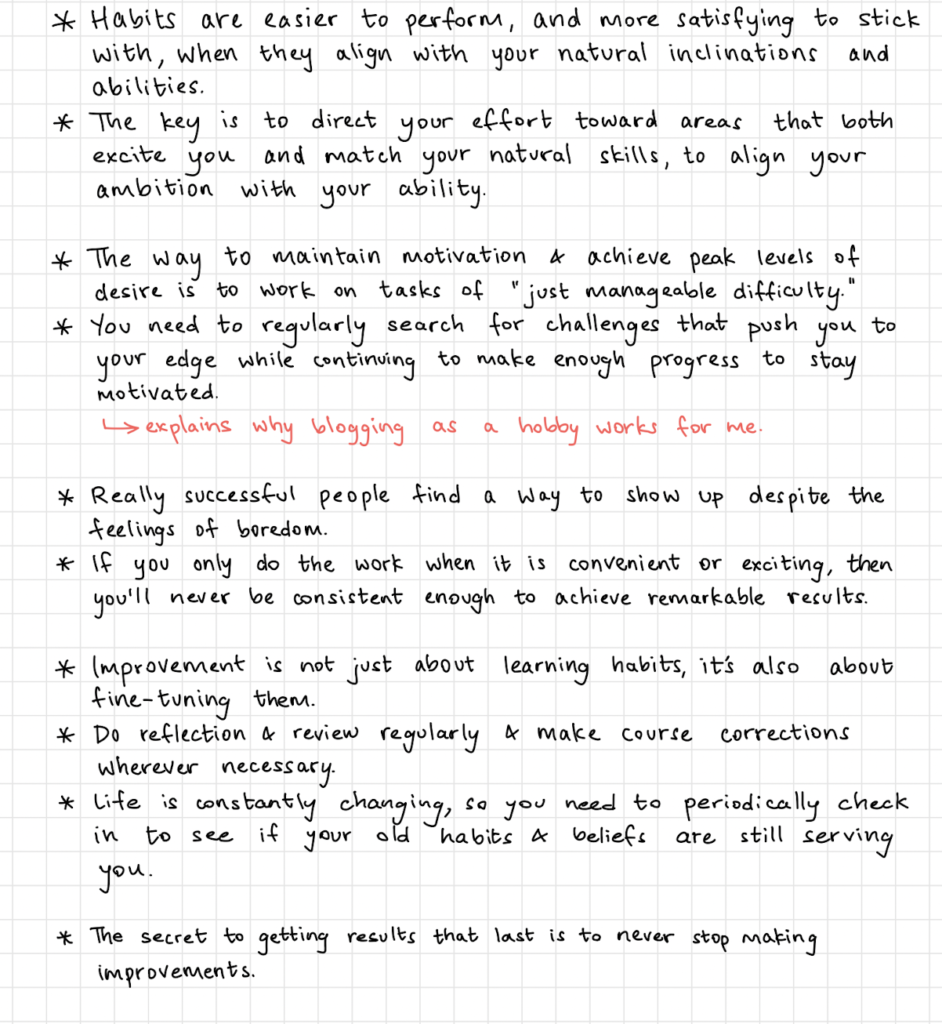
annotation inspiration!
Annotating books for fun has taken off recently. Several readers who previously considered it a sin love annotating and sharing their annotations. While social media isn't always great for readers, it is great for inspiration.
Here are some bookish accounts that share aesthetic annotations and will definitely inspire you to mark your books (yes, I'm plugging myself too):
You can also follow hashtags on Instagram to find more accounts! Here are the ones that I follow - #annotatingbooks #annotatedbooks
endnotes
There is no right way of annotating. And there is no best way of annotating. This is a deeply personal habit that is different for every single person.
When we read a book without annotating or noting anything, we are mostly simply absorbing what the authors put in front of us. Marking a book when reading is a way of making it your own. You take the story and put your spin on it through your opinions and the parts that you pick out as "main."
I believe that the best way to know if someone has loved a book is to see its condition. Keeping it neatly on a shelf without even breaking the spine is a form of love, yes. But the people I relate to are the ones who have worn down copies of their books with annotations, showing how much they've read and loved them.
let's chat!
Do you annotate your books? What are your favourite methods of annotation?
If not, are you here to start annotating? Did you find this post helpful? If you have any more questions, feel free to drop them in the comments, DM me on Twitter or Instagram, or email me!
If you found this post helpful, consider buying me a coffee in appreciation! ☕️
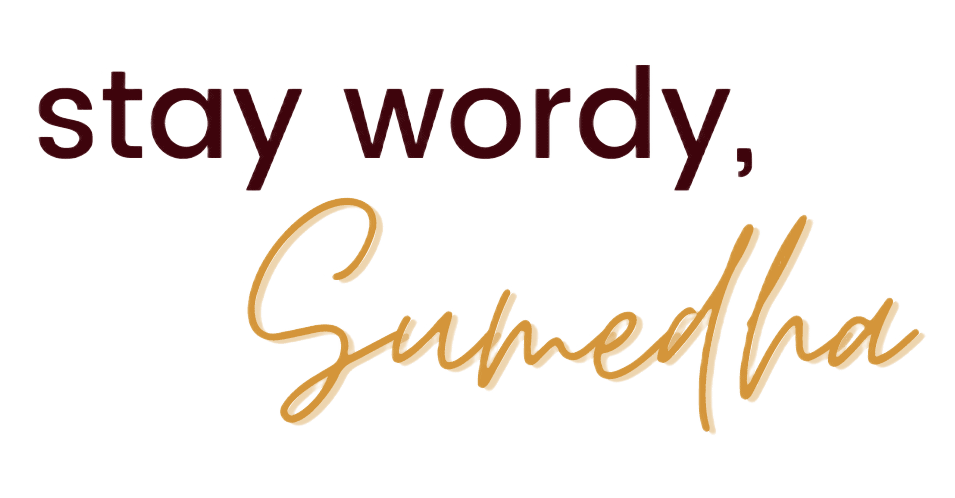

somehow i always seem to find myself back at this post whenever i'm feeling a little unsure about my annotating. it helps a lot, thank you!
i’m glad to help!
Hi! Love this post thank you so much. I want to start annotating and haven’t since school (15yrs ago) my main concern/question I didn’t see addressed is if the tombow highlighters smudge or cause print to fade? I’m thinking of a highlighter/pencil approach because pen scares me still.
Thank you thank you!
Hi Alex! I'm glad to help! The tombow highlighters don't smudge or cause print to fade and they don't bleed through most pages as well. They're a good pick for annotating.
You're welcome!
I have discovered that crayons are great for highlighting and no chance of bleed through.
oh I haven't tried crayons yet, i'll try them! thanks for the suggestion!